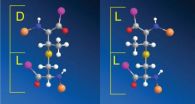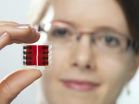(Press-News.org) ROCHESTER, Minn. -- Bathing a tiny newborn can be an exciting experience for parents, but it can also be intimidating. Newborns are small and vulnerable, slippery when wet, and the products marketed for their delicate skin can leave parents with abundant choices. As newborns are welcomed into the world, their skin needs to adapt to the new environmental changes around them. It's important for parents to understand proper bathing techniques and the appropriate skin care needed for their little one.
Pediatric dermatologist Dawn Davis, M.D., of Mayo Clinic Children's Center and colleagues recently published a review article in the International Journal of Dermatology about newborn skin care. Dr. Davis suggests several tips for keeping a newborn's skin clean and healthy, and making bath time an enjoyable experience:
Newborns will be ready for their first bath once their body temperature and cardiorespiratory status have stabilized, which is about six hours after birth. A daily bath for a newborn is not recommended, so limiting baths to every other day is sufficient for keeping their skin clean. On the days the newborn is not bathed, it's safe to gently wipe the face and skin with a damp washcloth, and it is recommended to wipe the exterior of each eyelid from the inside to the outside corner.
Immersing a newborn's entire body into a tub of water, excluding the head and neck, is preferred, as it helps them retain their heat while being bathed. Make sure to support the baby while immersed and only a few inches of warm water is necessary for the bath. To prevent scalding, the thermostat on the water heater should be set below 120 degrees Fahrenheit.
Simply washing newborns with plain water is adequate; newborn skin is susceptible to infection and irritation. If parents choose to use products, they should select mild, neutral-pH cleansers without dyes or fragrances. Products should be used sparingly and rinsed off completely.
Diapers should be changed every two to four hours or after a baby has soiled. Cleansing this area with only tap water and a soft cloth is recommended. If baby wipes are the only option, a hypoallergenic wipe without lanolin or alcohol will be less irritating to the skin. Periodically air-drying the area will give the skin a rest from moisture.
If a newborn gets a diaper rash, Dr. Davis suggests using zinc oxide, a paste with a neutral pH that acts as a barrier between the acidic products of urine and stool and the baby's skin. If the zinc oxide doesn't clear up the rash, she recommends the newborn be seen by a health care provider.
###
Co-authors of the published article include Molly Ness, M.D., and William Carey, M.D.
To schedule an interview with Dr. Davis, please contact Traci Klein.
About Mayo Clinic
Mayo Clinic is a nonprofit worldwide leader in medical care, research and education for people from all walks of life. For more information, visit http://www.mayoclinic.org/about and www.mayoclinic.org/news.
Journalists can become a member of the Mayo Clinic News Network for the latest health, science and research news and access to video, audio, text and graphic elements that can be downloaded or embedded. END
Mayo Clinic expert suggests proper techniques for newborn bathing and skin care basics
2013-01-22
ELSE PRESS RELEASES FROM THIS DATE:
Study: Odd biochemistry yields lethal bacterial protein
2013-01-22
CHAMPAIGN, Ill. — While working out the structure of a cell-killing protein produced by some strains of the bacterium Enterococcus faecalis, researchers stumbled on a bit of unusual biochemistry. They found that a single enzyme helps form distinctly different, three-dimensional ring structures in the protein, one of which had never been observed before.
The new findings, reported in Nature Chemical Biology, should help scientists find new ways to target the enterococcal cytolysin protein, a "virulence factor that is associated with acute infection in humans," said University ...
Scientists find gene interactions that make cocaine abuse death 8 times more likely
2013-01-22
COLUMBUS, Ohio – Scientists have identified genetic circumstances under which common mutations on two genes interact in the presence of cocaine to produce a nearly eight-fold increased risk of death as a result of abusing the drug.
An estimated one in three whites who died of cocaine exposure is a carrier of variants that make cocaine abuse particularly deadly.
The variants are found in two genes that affect how dopamine modulates brain activity. Dopamine is a chemical messenger vital to the regular function of the central nervous system, and cocaine is known to block ...
Tiny fossils hold answers to big questions on climate change
2013-01-22
The western Antarctic Peninsula is one of the fastest warming regions on the planet, and the fastest warming part of the Southern Hemisphere.
Scientists have debated the causes of this warming, particularly in light of recent instrumental records of both atmospheric and oceanic warming from the region. As the atmosphere and ocean warm, so the ice sheet (holding an equivalent of 5 metres of global sea level rise, locked up in ice) becomes vulnerable to collapse.
Now research led by Cardiff University published in Nature Geoscience has used a unique 12,000 year long ...
New study examines on/off relationships and 'sex with an ex' among teenagers and young adults
2013-01-22
Los Angeles, CA (January 22, 2013)- A new study finds that nearly half of older teenagers and young adults break up and get back together with previous dating partners and over half of this group have sex as part of the reconciliation process. This study was recently published in the Journal of Adolescent Research, a SAGE journal.
Researchers Sarah Halpern-Meekin, Wendy Manning, Peggy Giordano and Monica Longmore studied data on 792 daters and cohabiters ages 17 to 24, also known as "emerging adults." The researchers studied two relationship patterns specifically – reconciliation ...
New drug protects against side effects of chemotherapy
2013-01-22
A drug developed at Linköping University in Sweden protects against the side effects of cancer treatments while strengthening the effects on the tumour. An international drug evaluation is now starting up on a larger group of patients.
The results of the studies with the compound, known as calmangafodipir, were published in the latest issue of the cancer journal Translational Oncology with Professor Rolf G. G. Andersson as the main author.
The research was initiated on a substance called mangafodipir, which was used as a contrast media in magnetic resonance scans. But ...
Image sensors out of a spray can
2013-01-22
This press release is available in German. Image sensors are at the core of every digital camera. Before a snapshot appears on the display, the sensors first convert the light from the lens to electrical signals. The image processor then uses these to create the final photo.
Many compact and cellphone cameras contain silicon-based image sensors produced using CMOS (complementary metal oxide semiconductor) technology. Prof. Paolo Lugli and Dr. Daniela Baierl from TUM have developed a cost-effective process to improve the performance of these CMOS sensors. Their approach ...
Public acceptance of climate change affected by word usage
2013-01-22
Public acceptance of climate change's reality may have been influenced by the rate at which words moved from scientific journals into the mainstream, according to anthropologist Michael O'Brien, dean of the College of Arts and Science at the University of Missouri. A recent study of word usage in popular literature by O'Brien and his colleagues documented how the usage of certain words related to climate change has risen and fallen over the past two centuries. Understanding how word usage affects public acceptance of science could lead to better science communication and ...
LSUHSC research provides new drug target for Her-2 related breast cancer
2013-01-22
New Orleans, LA – Research led by Dr. Suresh Alahari, the Fred Brazda Professor of Biochemistry and Molecular Biology at LSU Health Sciences Center New Orleans and its Stanley S. Scott Cancer Center, details exactly how the Her2 cancer gene promotes the progression and spread of breast cancer cells. The inactivation of a tumor suppression gene called Nischarin is among the mechanisms identified. The findings provide a new therapeutic target to block the function of Her2. The research was published in Cancer Research, OnlineFirst on January 21, 2013.
About 30% of breast ...
Bioethics leader calls for bold approach to fighting obesity
2013-01-22
(Garrison, NY) Arguing that obesity "may be the most difficult and elusive public health problem the United States has ever encountered" and that anti-obesity efforts having made little discernible difference, Daniel Callahan, co-founder and President Emeritus of The Hastings Center, proposes a bold and controversial approach to fighting the epidemic.
Callahan says that the public health community can learn from one of the most successful public health campaigns: the anti-smoking campaign. A primary strategy has been to stigmatize smokers, he says, making it clear that ...
From dark hearts comes the kindness of mankind
2013-01-22
The kindness of mankind most likely developed from our more sinister and self-serving tendencies, according to Princeton University and University of Arizona research that suggests society's rules against selfishness are rooted in the very exploitation they condemn.
The report in the journal Evolution proposes that altruism — society's protection of resources and the collective good by punishing "cheaters" — did not develop as a reaction to avarice. Instead, communal disavowal of greed originated when competing selfish individuals sought to control and cancel out one ...

